Amazing footage of Great White Sharks
Amazing footage of the Bowerbird's bower building. These extraordinary birds (males) build ornate "buildings" to impress their female mates. Presented by David Attenborough. Prepare to be blown away!
Some amazing footage of male birds in spectacular plumage dressed to attract females. Narrated by David Attenborough.
Ayer's Rock (Uluru) is the eroded stump of a mountain that 350 million years ago was the height of the Andes.

Source: Bill Bryson
Box Jellyfish (Carybdea alata)
 .
.
The Saltwater Crocodile is the world's largest reptile. These amazing creatures are found on the northern coast of Australia and inland for up to 100 kms or more. The Saltwater Crocodile has been reported to grow to lengths of 7 metres!, but the average size of a Saltwater Crocodile is 4 metres long.
They reproduce in the wet season, with the female crocodile laying up to 60 eggs at a time. When the crocodiles are born, only a very small number of these survive in the wild and grow to be adult crocodiles.
The crocodile is now a protected species in Australia, however if human danger is a factor, the crocodile will be moved away from possible contact. Many years ago Australia used to export crocodile skin, this is now illegal.
Amazing Animal Fact: The temperature of the saltwater crocodile's egg will determine the sex of the new born crocodile.
Did you know? The saltwater crocodile is the World's largest reptile.
.

Blue Ring Octopus
The Blue Ring Octopus is a deadly venomous octopus which inhabits warm waters and shallow reefs off the coast of Australia. It also lives off the coast of New Guinea, Indonesia and the Phillipines.
This octopus has distinctive blue rings (hence its name) on its body and eight tentacles. With the tentacles spread, it is about 20 cms in diameter. It feeds on small sea creatures, and wounded fish.
Amazing Fact: If an octopus loses a tentacle, they can regenerate and grow a new one.
.

Stonefish (Synanceia verrucosa)
The Stonefish is another of Australia's deadly marine creatures. They inhabit shallow waters along the coast. The stonefish is well camouflaged in the ocean, as it is a brownish colour, and often resembles a rock. This is why it is called the Stonefish.
It has thirteen sharp dorsal spines on its back, which each have extremely toxic venom.
Amazing Animal Fact: The venom of a stonefish can kill a human in two hours.
People swimming in the ocean need to take care, as they can unknowingly step on a Stonefish and have venom injected into their foot.
The stonefish feeds on other small fish or shrimp.
.


Brown Snake (Pseudonaja textilis)
The brown snake is approximately 1.5 metres long, and is one of Australia's more deadly creatures. They have venom which can cause death to humans relatively quickly if left untreated. Brown snakes up to 2.3 metres have been recorded in Australia.
They feed on small creatures, such as mice and rats, small birds, lizards or even other snakes. These snakes are found in Eastern Australia, however they are not found in Tasmania.
.
 .
.

.
Funnel-web Spiders
Funnel-web spiders are found in eastern Australia, including Tasmania, in coastal and highland forest regions - as far west as the Gulf Ranges area of South Australia. Thirty-six species, including three tree dwelling species, have been identified.
Funnel-webs burrow in moist, cool, sheltered habitats - under rocks, in and under rotting logs, crevices, rot and borer holes in rough-barked trees. In gardens, they prefer rockeries and dense shrubberies, and are rarely found in more open situations like lawns. The most characteristic sign of a Funnel-web's burrow is the irregular silk trip-lines that radiate out from the burrow entrance of most species. These trip-lines alert the spider to possible prey, mates or danger.
Rain may flood burrows and the temporary retreats of male Funnel-webs, causing an increase in their activity. Funnel-webs are very vulnerable to drying out, so high humidity is more favourable to activity outside the burrow than dry conditions. Most activity is nocturnal. Gardeners and people digging in soil may encounter Funnel-webs in burrows at any time of the year.
Bites are most prevalent during summer and autumn when males leave the burrows in search of females. Accidental encounters with wandering males usually occur in gardens, houses, garages and sheds - particularly ground-level dwellings on concrete slabs.
Bites are dangerous and can cause serious illness or death. The venom appears to particularly affect primates (ie humans), whereas other mammals - such as cats and dogs - are relatively resistant.
The male Sydney Funnel-web Spider is more dangerous than the female. This is because the toxic venom component that attacks the human and primate nervous system so severely is only present in male spiders. Initial symptoms after a bite include local pain, mouth numbness, vomiting, abdominal pain, sweating and salivation. Antivenom is available and no deaths have occurred since its introduction.
.

The aurora is a glow observed in the night sky, usually in the polar zone. In northern latitudes, it is known as "aurora borealis" which is named after the Roman goddess of the dawn, Aurora and the greek name for north wind, Boreas since in Europe especially, it often appears as a reddish glow on the northern horizon as if the sun were rising from an unusual direction. The aurora borealis is also called the "northern lights". The aurora borealis most often occurs from September to October and March to April.


One of my favourite sets of photos taken at Fitzroy Mountain. The mountain was like a chameleon, adorning itself in different colours at different parts of the day. The photos show pre dawn, sunrise (red, then orange), early morning (all lit up) and late dusk.
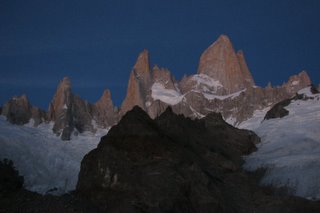
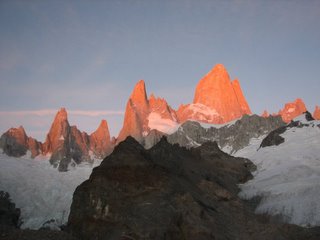
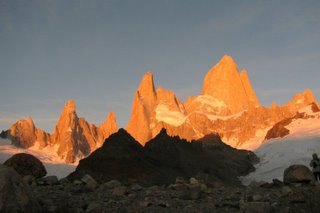
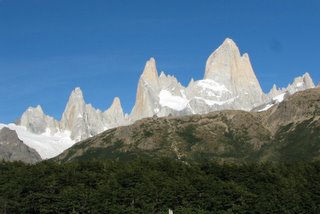
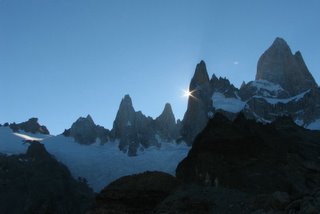
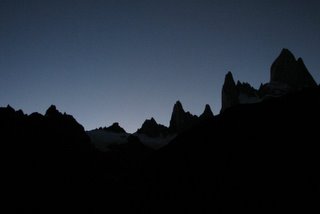

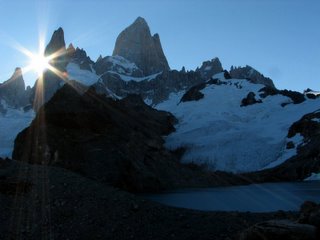
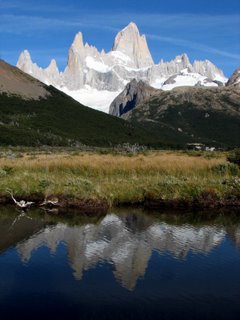

The largest organism found on earth can be measured using a variety of methods. It could be defined as the largest by volume, mass, height, or length.





_crop.jpg)

The biggest kind of frog is the Goliath frog (Conraua goliath). They come from Cameroon in West Africa. Their bodies can reach the size of nearly a foot (30 cm) long.(remember: their legs are also AT LEAST that long!!!!) The Conraua Goliath weighs as much as a large housecat, about 3.3 kilos!

The oldest living things on earth are Bristlecone pine trees, some of which can be found in the White Mountains of California. Many of them are over four thousand years old. Many of the trees living today were seedlings when the pyramids were being constructed, and mature trees in the time of Christ. These trees are ancient!


Actively studied for 50 years, the rocks that mysteriously move around the dried lake bed playa in Death Valley, called the Racetrack, are yet to have an unquestionable explanation for their movement. Some say that there is moisture that causes the rocks to move slightly and gradually over time. Some say that ice forms and moves the stones. In any case, the process is slow and it repeats itself over and over again in order to move the stones.

Situated 60 miles off the mainland of belize is this incredible ‘geographical phenomenon’ known as a blue hole. There are numerous blue holes around the world but none as stunning as this one.


Mt. Egmont Volcano last erupted in 1755 and is now situated at the centre of egmont national park. park regulations have ensured the survival of a forest which extends at a 9.5 km radius from the summit of the volcano, the result of which can be seen from space in the form of huge dark green disc. this photo was taken during the sts-110 mission, April 2002.
 source
source
Covering an area 56.6 x 61.3 km and taken on may 2nd, 2002, this photo shows an alluvial fan that formed on the southern border of the taklimakan desert in china. an alluvial fan usually forms as water leaves a canyon, each new stream eventually closing up due to sediment - the result being a triangle of active and inactive channels. the blue ones on the left are currently active.

There are some amazing 360 degree panaramas here - feels like you are really there